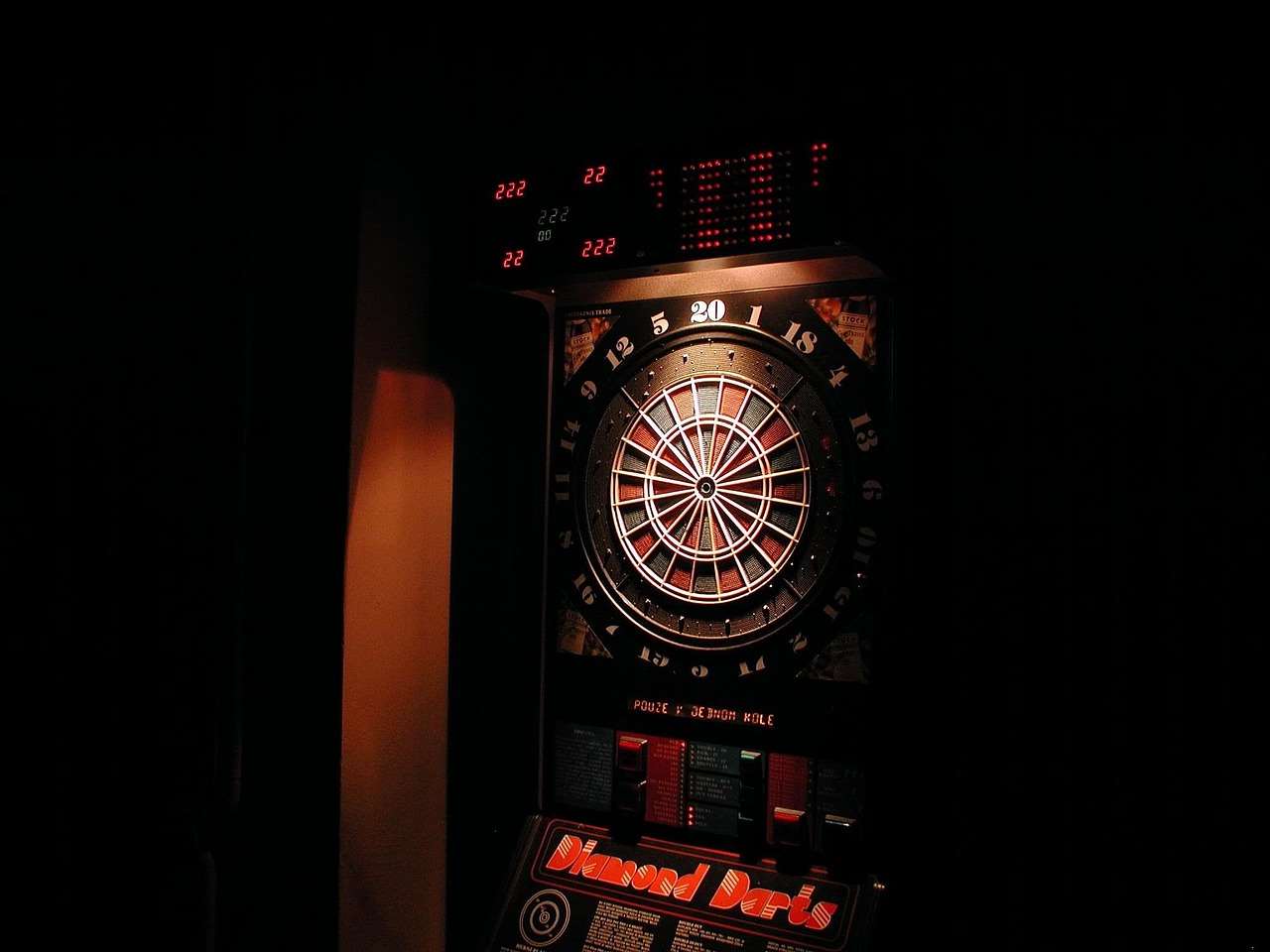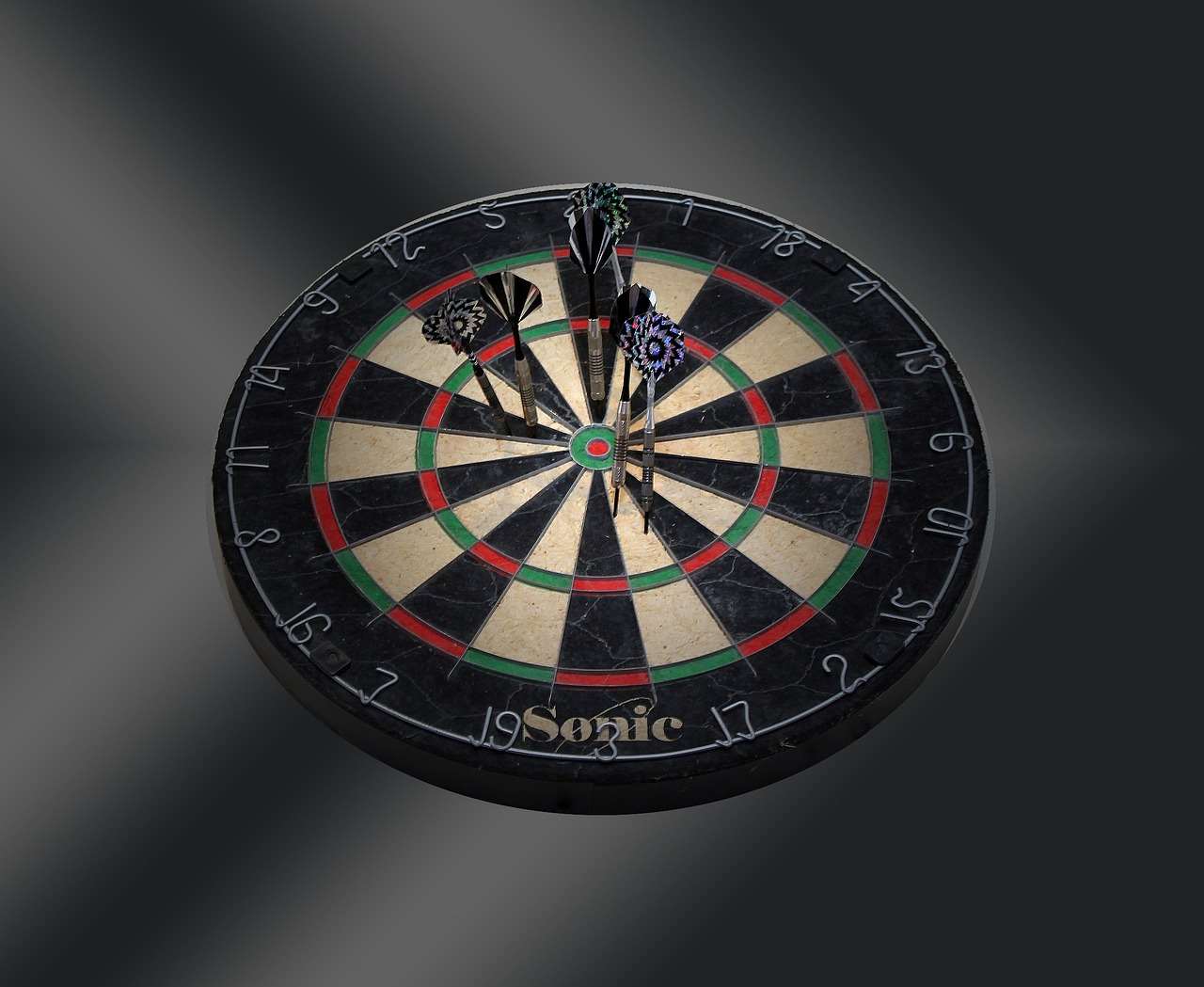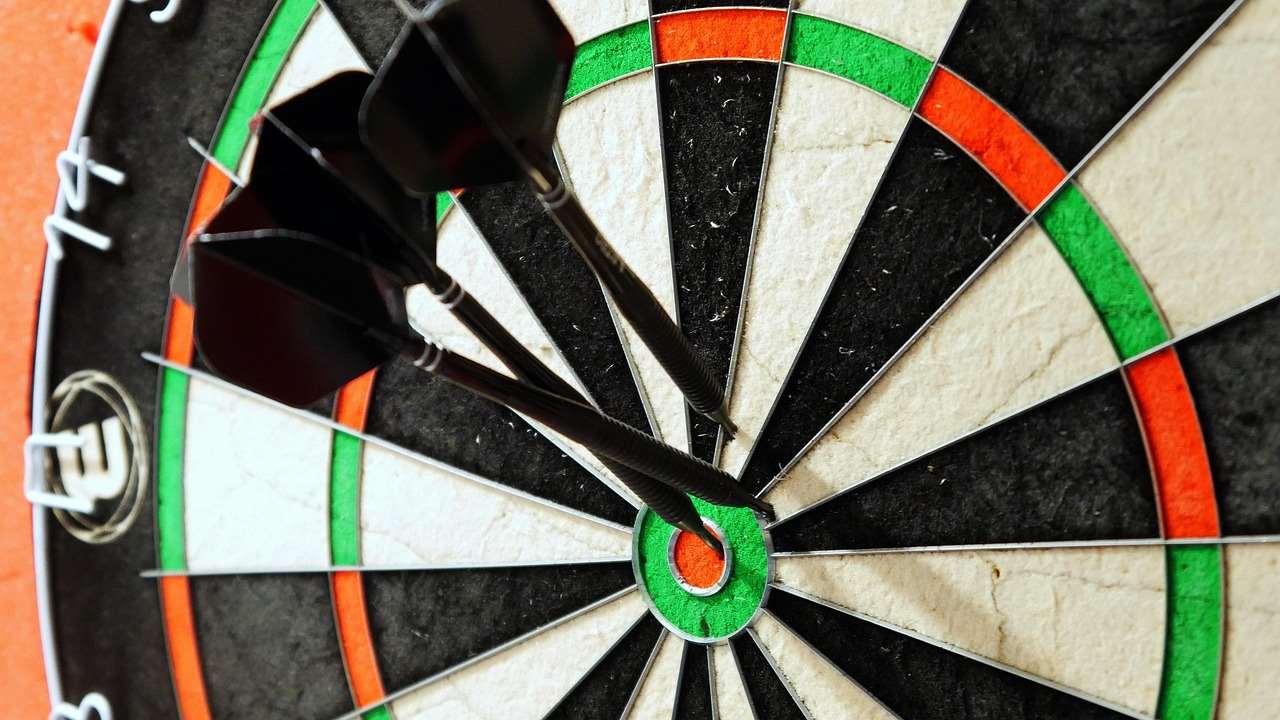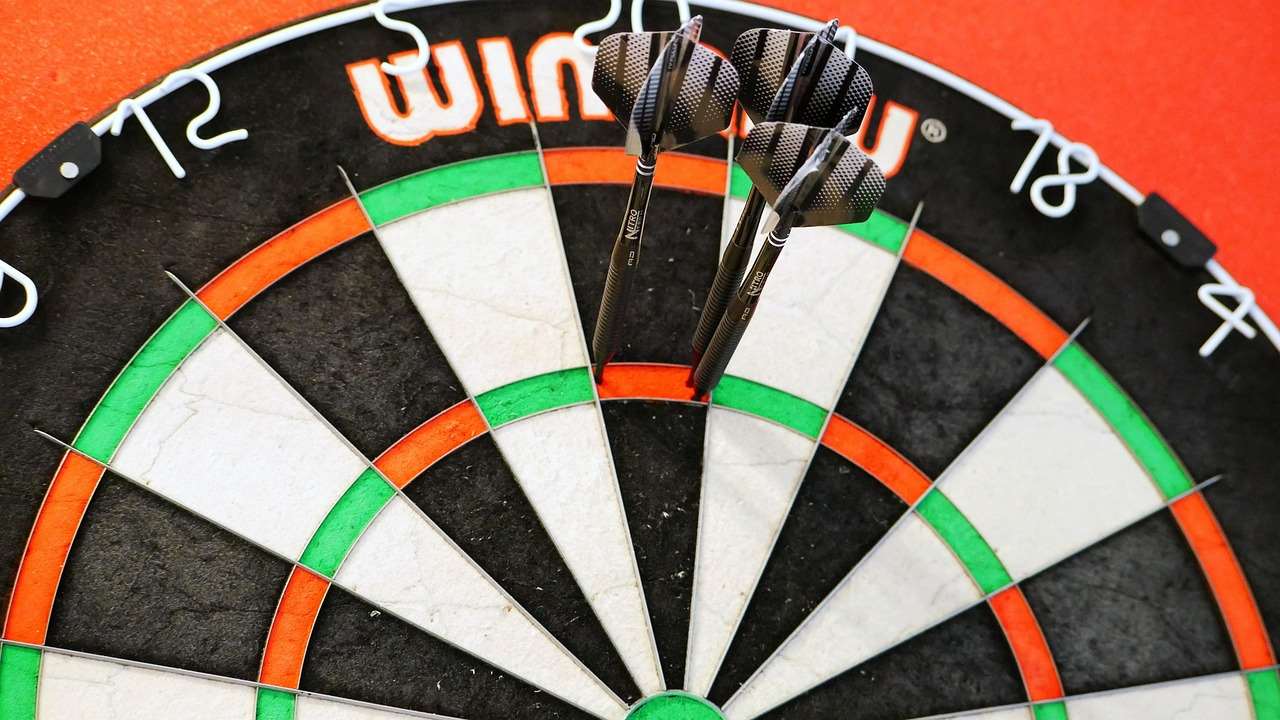Creating accessible and inclusive games is crucial, and Around the Clock: adapting for visually impaired players is entirely possible with thoughtful modifications. This article explores practical strategies and techniques for making the game of darts enjoyable for everyone, regardless of visual ability. We’ll delve into different adaptation methods, from tactile enhancements to audio cues, ensuring a level playing field and a fun experience.
⚠️ Still Using Pen & Paper (or a Chalkboard)?! ⚠️
Step into the future! The Dart Counter App handles all the scoring, suggests checkouts, and tracks your stats automatically. It's easier than you think!
Try the Smart Dart Counter App FREE!Ready for an upgrade? Click above!
Around the Clock: Adapting for Visually Impaired Players
Darts, a game of precision and skill, might seem inherently visual, but with a few clever tweaks, it can become a captivating and inclusive activity for players with visual impairments. The key is to minimize reliance on sight and maximize the use of other senses, primarily touch and hearing. Accessibility is paramount, and by implementing these adaptations, we can ensure that everyone has the opportunity to participate and compete.

Tactile Adaptations: Feeling the Way to Success
Tactile adaptations are arguably the most fundamental aspect of making darts accessible. This involves modifying the dartboard and its surroundings to provide tangible cues and references.
- Raised Markings on the Dartboard: Adding raised markings to the dartboard, such as tactile bumps or Braille labels, allows players to identify different scoring zones by touch. Braille can be used to indicate the numerical value of each section.
- Tactile Oche (Throwing Line): A clearly defined, textured oche is essential. Using a material with a distinct feel, such as a rubber strip or a raised platform, helps players consistently position themselves for each throw. This ensures a stable and repeatable stance.
- Dartboard Surround with Tactile Boundaries: A surround made of a material like felt or cork can provide tactile feedback, indicating the edges of the dartboard. This helps prevent accidental throws outside the target area.
- Dart Holders with Tactile Identification: Use dart holders with unique textures or shapes for each player to easily identify their darts. This is particularly helpful in a group setting.
Consider Basic Darts Fundamentals for Beginners as a starting point before implementing tactile adaptations, as understanding the game’s core concepts is essential.
Audio Cues: A Sound Strategy
Audio cues can complement tactile adaptations and provide additional information during gameplay. These cues can be delivered through various means, such as voice announcements, beeps, or tones.
- Voice Announcements of Scores: A designated scorer or an automated system can announce the score after each throw. This eliminates the need for the player to visually confirm the result.
- Audio Guidance System: More advanced systems might use audio cues to guide the player towards the center of the board. This could involve directional sounds or tones that change in pitch depending on the dart’s proximity to the bullseye.
- Clicking or Tapping Sounds for Target Zones: Different sections of the dartboard could be associated with unique clicking or tapping sounds. When a dart lands in a specific zone, the corresponding sound is triggered, providing immediate feedback to the player.
Remember to adjust the volume and type of audio cues based on the individual’s preference and hearing ability. The goal is to create a clear and informative auditory experience without causing distractions.

Game Modifications and Rule Adjustments
In addition to tactile and audio adaptations, game modifications and rule adjustments may be necessary to create a truly inclusive experience. These adjustments should focus on minimizing visual demands and promoting fairness.
- Allowing a Spotter: A spotter can provide verbal guidance and assistance, helping the player align themselves with the dartboard and identify their target. The spotter should be familiar with the game and able to communicate effectively.
- Simplified Scoring System: Consider using a simplified scoring system, such as reducing the number of points required to win or focusing on hitting specific target areas. This can make the game more accessible to beginners and players with cognitive impairments.
- Adjustable Throwing Distance: Allowing players to adjust their throwing distance can accommodate different levels of visual ability and physical strength. Experiment with different distances to find a comfortable and challenging setting for each individual.
- Using Larger Darts: Slightly larger and heavier darts can be easier to grip and control, especially for players with limited dexterity.
Choosing the Right Equipment
Selecting the appropriate dart equipment is crucial for maximizing comfort and performance. Consider the following factors when choosing darts for visually impaired players:
- Dart Weight and Grip: Opt for darts with a weight and grip that feel comfortable and secure in the player’s hand. Experiment with different barrel shapes and textures to find the best fit.
- Shaft Length and Material: Shaft length can affect the dart’s trajectory and stability. Experiment with different lengths to find the optimal setting for each player. Consider using shafts made of durable materials, such as nylon or aluminum.
- Flight Shape and Size: Flight shape and size can influence the dart’s aerodynamic properties. Larger flights tend to provide more stability, while smaller flights offer greater speed.
Allow players to try out different darts and accessories to find the combination that works best for them.

The Importance of Clear Communication and Patience
Clear communication and patience are essential throughout the adaptation process. Take the time to understand the individual’s needs and preferences, and be prepared to make adjustments as needed. Explain the rules and modifications clearly, and provide ongoing support and encouragement.
- Verbal Instructions: Provide clear and concise verbal instructions, avoiding jargon or overly technical terms.
- Demonstrations: If possible, demonstrate the throwing technique and other aspects of the game.
- Positive Reinforcement: Offer positive reinforcement and praise for effort and progress.
Remember that everyone learns at their own pace, and it’s important to create a supportive and encouraging environment.

Training and Practice Techniques
Once the adaptations are in place, it’s important to focus on training and practice techniques that are tailored to the needs of visually impaired players. These techniques should emphasize the development of tactile and auditory skills.
- Target Practice with Tactile Feedback: Focus on practicing throws towards specific target areas using tactile feedback to guide accuracy.
- Repetitive Drills: Repetitive drills can help develop muscle memory and improve consistency.
- Visualization Techniques: Encourage players to visualize the dartboard and their target before each throw.
- Peer Support and Mentorship: Connecting with other visually impaired dart players can provide valuable support and guidance.
Regular practice and consistent feedback are essential for improving skills and building confidence.
Promoting Inclusivity and Awareness
Ultimately, the goal is to promote inclusivity and awareness within the darting community. This involves educating others about the challenges faced by visually impaired players and encouraging them to embrace these adaptations.
- Organize Inclusive Dart Events: Host dart events that are specifically designed to be inclusive and accessible to players of all abilities.
- Share Information and Resources: Share information and resources about adapting darts for visually impaired players with other dart clubs and organizations.
- Advocate for Accessibility: Advocate for greater accessibility in dart venues and competitions.
By working together, we can create a more inclusive and welcoming environment for everyone who enjoys the game of darts.

The Benefits of Adapted Darts for Visually Impaired Players
Adapting darts provides numerous benefits beyond just the enjoyment of the game. It promotes social interaction, cognitive stimulation, and physical activity. It also fosters a sense of accomplishment and independence. Participating in darts can improve hand-eye coordination, concentration, and spatial awareness. The social aspect of the game helps combat isolation and promote a sense of belonging. Moreover, knowing how to make darts fairer with handicap rules further enhances the inclusive experience.
Future Innovations in Accessible Darts
The future of accessible darts holds exciting possibilities with ongoing advancements in technology. We can expect to see even more sophisticated audio guidance systems, haptic feedback devices, and AI-powered scoring systems. These innovations will further enhance the gaming experience and create even greater opportunities for inclusivity.
Conclusion: Making Darts Accessible for Everyone
Around the Clock: adapting for visually impaired players is not just about modifying a game; it’s about creating opportunities, fostering inclusivity, and empowering individuals to participate fully in activities they enjoy. By implementing the strategies outlined in this article, we can break down barriers and create a more welcoming and accessible environment for everyone. Remember that even small changes can make a significant difference in the lives of visually impaired players. The key is to be creative, patient, and committed to creating a truly inclusive experience. Embrace these adaptations, share your knowledge, and let’s work together to make darts a game that everyone can enjoy. Start exploring alternative darts rules for home play today to expand your understanding of game variations and accessibility options.
Hi, I’m Dieter, and I created Dartcounter (Dartcounterapp.com). My motivation wasn’t being a darts expert – quite the opposite! When I first started playing, I loved the game but found keeping accurate scores and tracking stats difficult and distracting.
I figured I couldn’t be the only one struggling with this. So, I decided to build a solution: an easy-to-use application that everyone, no matter their experience level, could use to manage scoring effortlessly.
My goal for Dartcounter was simple: let the app handle the numbers – the scoring, the averages, the stats, even checkout suggestions – so players could focus purely on their throw and enjoying the game. It began as a way to solve my own beginner’s problem, and I’m thrilled it has grown into a helpful tool for the wider darts community.